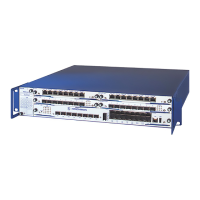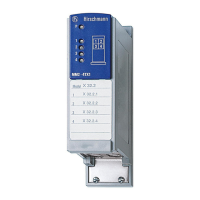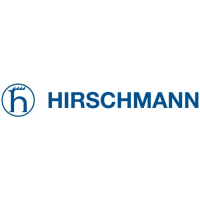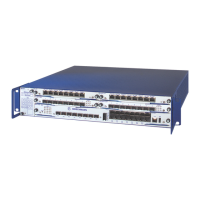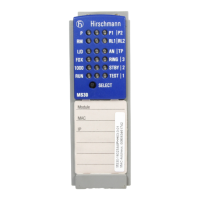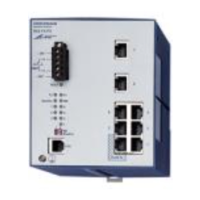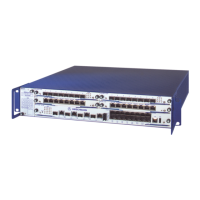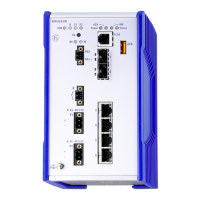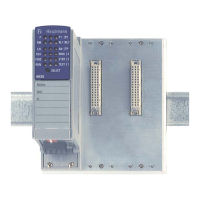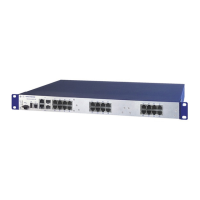Quality of Service (QoS) Commands 48
© 2001- 2006 Hirschmann Automation and Control GmbH. All Rights Reserved.
Format ip access-group <accesslistnumber> in [<1-4294967295>]
Mode Interface Config
Global Config
5.2.2.1 no ip access-group
This command removes a specified IP ACL from an interface.
Default none
Format no ip access-group <accesslistnumber> in
Mode Interface Config
5.2.3 show ip access-lists
This command displays an IP ACL <accesslistnumber> is the number used to identify the IP ACL.
Format show ip access-lists <accesslistnumber>
Modes Privileged EXEC
Rule Number This displays the number identifier for each rule that is defined for the IP ACL.
Action This displays the action associated with each rule. The possible values are permit or
deny.
Protocol This displays the protocol to filter for this rule.
Source IP Address This displays the source IP address for this rule.
Source IP Mask This field displays the source IP Mask for this rule.
Source L4 Port This field displays the source port for this rule.
Destination IP Address This displays the destination IP address for this rule.
Destination IP Mask This field displays the destination IP Mask for this rule.
Destination L4 Port This field displays the destination port for this rule.
Service Type Field Match This field indicates whether an IP DSCP, IP Precedence, or IP TOS
match condition is specified for this rule.
Service Type Field Value This field indicates the value specified for the Service Type Field Match
(IP DSCP, IP Precedence, or IP TOS).
5.2.4 show access-lists
This command displays IP ACLs and MAC access control lists information for a designated interface
and direction.
Format show access-lists interface <slot/port> in
Modes Privileged EXEC
ACL Type Type of access list (IP or MAC).
ACL ID Access List name for a MAC access list or the numeric identifier for an IP access list.
Sequence Number An optional sequence number may be specified to indicate the order of this
access list relative to other access lists already assigned to this interface and direction.
A lower number indicates higher precedence order. If a sequence number is already in
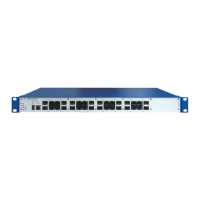
